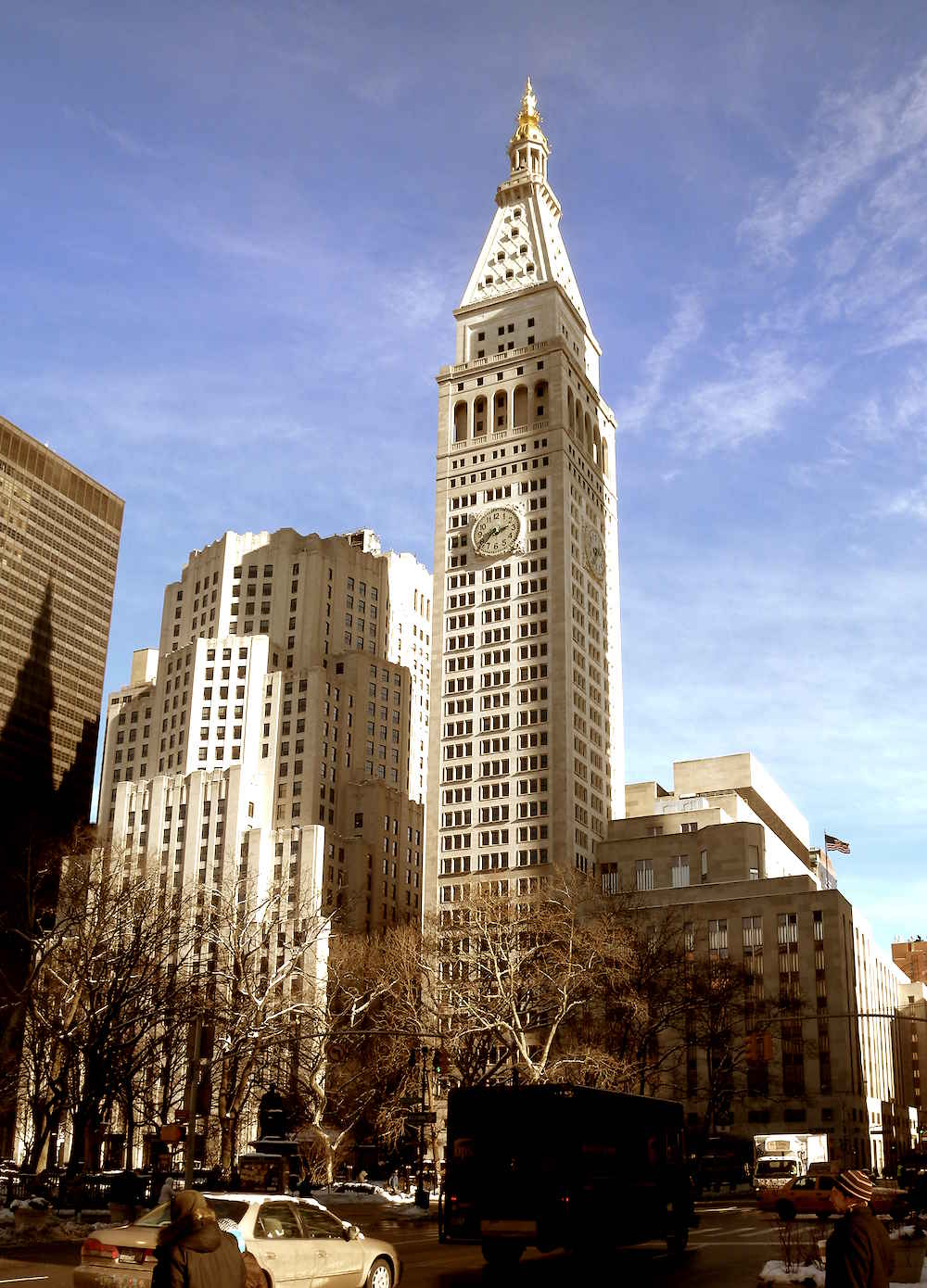Initial creation: 4-1-2024 | Last updated: 30-3-2025 Head back to the main page Head back to the 2005-ANSPO hub
This article is a warmup article. This means it doesn't nessecarily contain significantly relevant plot information.
Hudson Metropolitan Area (state)
Hudson Metropolitan Area
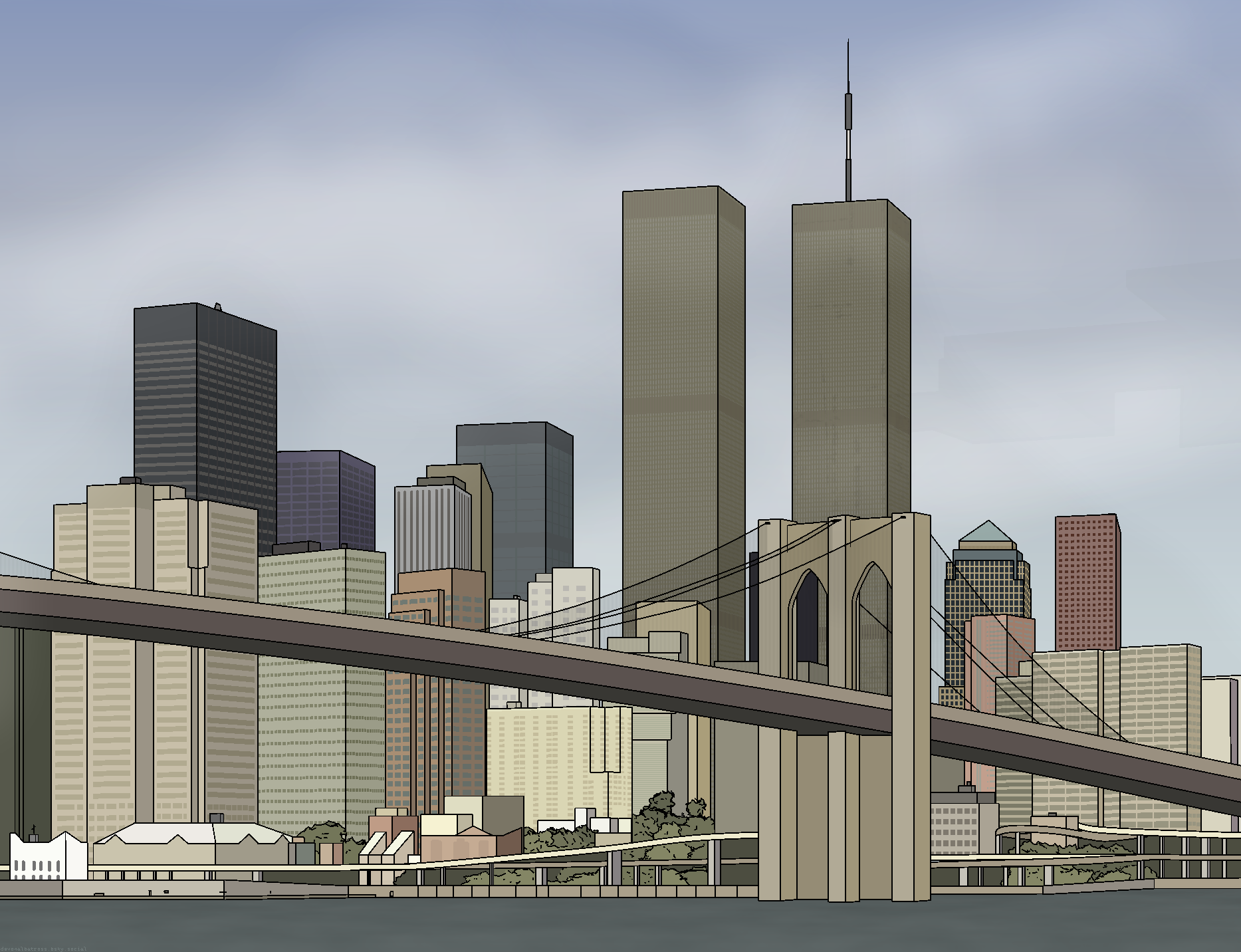
The Atlantic Trade Center in New York, taken in 2004
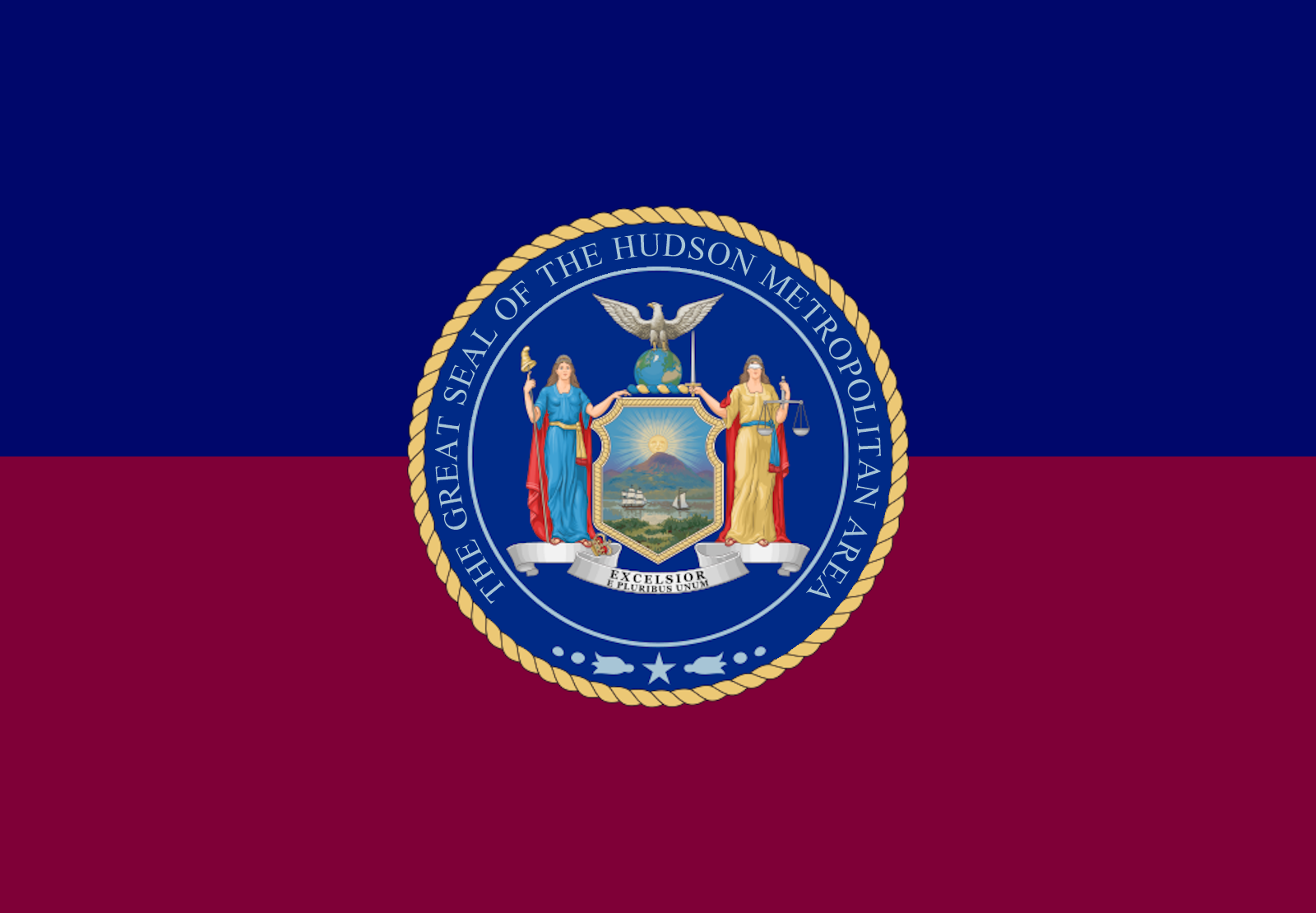
Flag
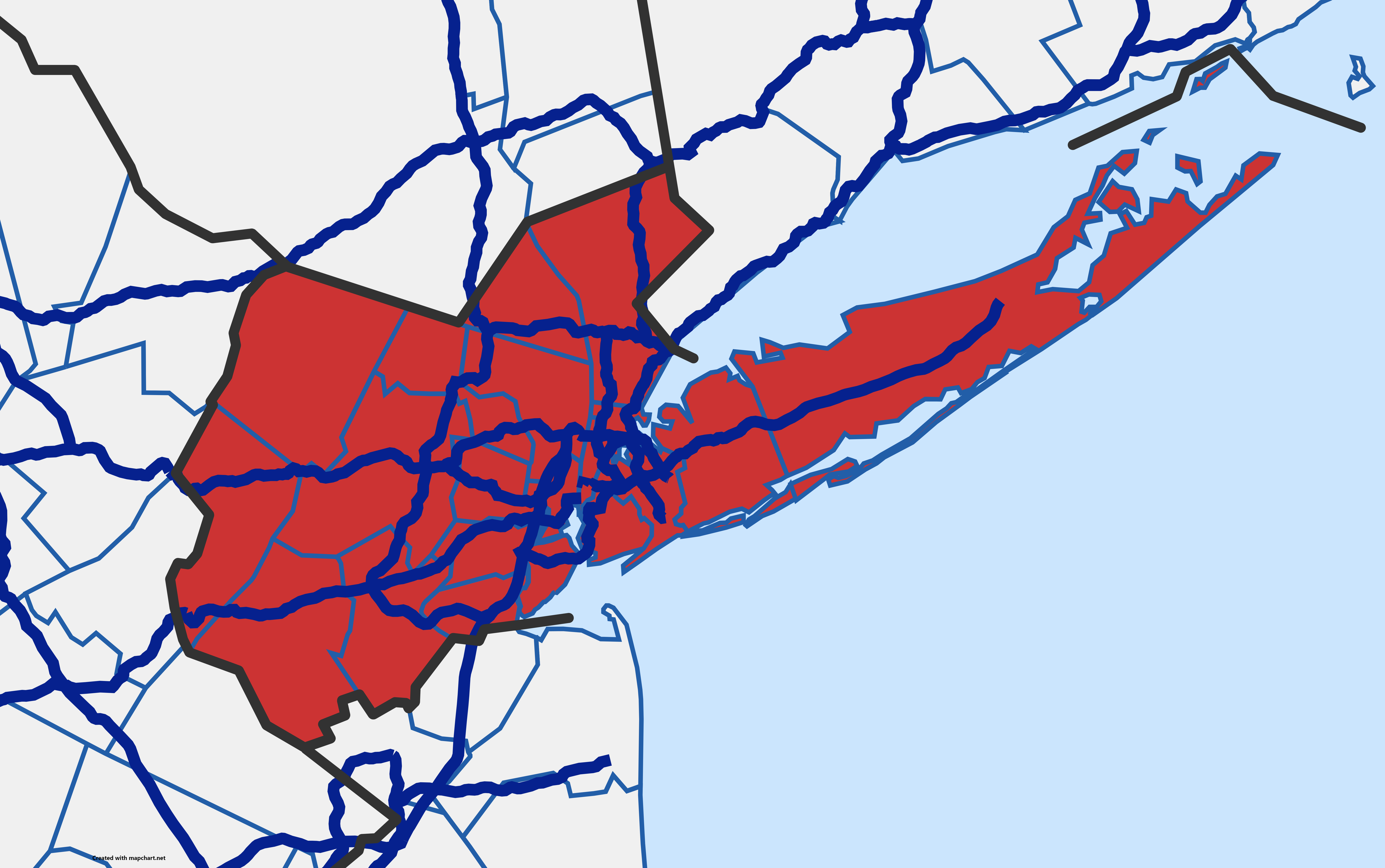
State map
| Capital | New York |
|---|---|
| Largest City | New York |
| Demonyms | Hudsonian, New Yorker, Long Islander |
|---|
| Population | 12.4 million |
|---|
The Hudson Metropolitan Area, often simply called Hudson or HMA, is the most populous state in the Unitary American State. The state comprises nineteen counties, namely Brooklyn, Westchester, Manhattan, Bronx, Richmond, Rockland, Hagenot, Nassau, Suffolk, Sussex, Passaic, Bergen, Hudson, Essex, Union, Uppersex, Somerest, Newark and Hunferdon.
The largest city is New York, which itself has a population of 8.4 million. New York consists of six 'boroughs', which are extensions of their respective counties, these being Brooklyn, Hagenot, Manhattan, Bronx, Richmond, and Newark - Newark being annexed into New York in 1998.
It is a globally significant city which is a political, economic, business, media, tech, and entertainment hub and center, with a significant amount of companies such as Pan Am and Amazon having their headquarters situated within the city. The most famous structures within New York are the Atlantic Trade Center, Superior Union Tower, the Manhattan Pact Building, the Empire State Building, and the Statue of Liberty.
Due to being the second largest city on Earth, the collective aberrant generated by all consciousnesses weighs down New York's cognorelativistic Field, causing a host of pararealistic activity within the city. As such, the United Deep State Nations has an office building in Midtown Manhattan, operating as a mass-surveillance base to ensure normalcy is maintained throughout the city.
History
17th to 19th centuries
New York was initially called New Amsterdam when it was founded by the Dutch in 1625. In 1664 the Dutch handed the city over to the British after overwhelming British forces demanded the city to surrender to them, which was done without bloodshed. The Colony of Hudsonia was then established in what is present-day HMA. It was later expanded and reformed into the Colony of New York in 1667, and would encompass the modern day territories of New York state and the HMA combined. After the American Revolution, the former colony would retain its name but become a state of the United States of America.
During the city of New York's occupation under the Angelic States of America, its name was changed to the Archsettlement of Ananiel. It would be briefly changed to the City of Mammon under the rule of the Demonic States of America. After the American Civil War and the Great Northeastern Anticrusade had ended, the city's name was changed back to New York.
During the late 19th century, New York would undergo many ministerially-mandated changes, evolving it into a residential and commercial center, aswell as a hub for European immigrants. In 1886, the Statue of Liberty was placed on Liberty Island in New York's harbor, as a gift from France. Earlier between 1869 and 1871, the Grand Central Depot was built in central Manhattan.
Early 20th century
In 1903, the Grand Central Depot was partially torn down, and renovated and rebuilt into the Grand Central Terminal, which at the time would serve as an intercity hub for New York and neighboring cities, such as Boston and Philadelphia. Construction was slowed down as the station was changed bit-by-bit, as to not detrimentally interrupt rail service. After a decade in 1913, Grand Central Terminal was opened.
In 1910, the City of Hagenot (until then a seperate city) was annexed into New York, by a referendum which ended in favor of the annexation with a 2% margin. Manhattan's government had supposedly paid companies with a lot of Hagenotian employees to encourage their employees to vote in favor of the referendum in return for a bonus. After the annexation, the Manhattan city government (which it had been called until then) renamed to the City of New York officially, as 'New York' until then was simply slang for the city governments in the general area.
Later in 1916, New York had attempted to annex Brooklyn with the same trick, but it failed just barely as 56% of Brooklynites voted against the annexation. The city government of New York then offered to cooperate with the city government of Brooklyn to dig up to 6 subway lines between the two, only four of which were actually completed as the last two were planned to have been dug during the early 1920s, which were put off and eventually cancelled altogether due to the consequences of the Depression of 1920-21.
The extra connectivity between the two cities would later prove to be sufficient to change Brooklynite minds, as New York again attempted to annex Brooklyn in 1923 via referendum, and once more paid companies into convincing their employees to voting in favor of the annexation. The referendum would result in 63% in favor of the annexation, and it was finalised by the end of the year. The annexed city governments would persist as much less autonomous 'boroughs' inside of the New York city government.
During the Great Depression, the Bronx county saw a great decline in it's local commerce, almost bankrupting the city government. New York offered to 'temporarily' annex the Bronx county to save it from said fate, which the Bronx city government did without referendum. In 1937, New York held a referendum to release the Bronx as it's own city government again, but the referendum was not held as a Bronxite-exclusive one, instead being held across the whole of New York. At that time, the Bronx area was the least populated out of all four areas in New York. 87% of Bronx residents voted to seperate, but overall, the results came in as 23% in favor of seperation due to the fact that the referendum was held in other areas such as Hagenot and Brooklyn too, meaning that the referendum never passed.
The Bronx Marches
The Bronx Marches were a series of protests between 1937 and 1944, defining a period when Bronxites protested and to an extent fought to seperate from the New York city government. The first Bronx March was on September 10th, 1937, only a few days after the results of the failed 1937 referendum. An estimated 500 people went onto Willis Avenue in Bronx blocking motor traffic and holding up signs, some of them reading NEW YORK IS THE IMPERIALIST SERPENT OF AMERICA and BRONX IS NOT NEW YORK. After roughly half an hour, mounted police units arrived at Willis Avenue and reportedly used an unacceptable degree of violence to put down the protest, some of the afflicted protesters requiring immediate medical attention shortly after being put down by police. New York's city government supposedly paid news companies such as the New York Times to not cover the stories of the protesters themselves.
The second Bronx March occured four months later on January 8th, 1938. This time, an estimate of 1.700 people went onto Willis Avenue once more, which was put down within two hours. Similar procedures were executed by the New York city government, as media regarding those who were in the protest is scarce.
On the third Bronx March, roughly 4.000 gathered on Courtlandt Avenue on October 8th, 1938. Roughly at 1:30 PM, they all began marching south on the Third Avenue, across the Third Avenue Bridge, then marched down Park Avenue, towards the New York City Hall. During this, a famous picture of a now imfamous protest sign was taken, widely associated with Bronx speratism, reading NYC GOVT WILL OPRESS BRONX IF IT MEANS OUR TAX. The reason for the sign was that New York taxes were higher than the Bronx taxes prior to the annexation. After about an hour of marching, they reached the New York City Hall and demanded the seperation of Bronx from New York. The then-mayor of New York, Hebert H. Kehman, stepped out and addressed the protesting crowd. The addressal was not taken well by the Bronxites, and tried to enter the city hall itself, but were held back and restrained by the New York police.
The fourth Bronx March was the largest of the marches, amassing roughly 22.500 participants. On May 17th, 1941, 12.000 of them went on strike and the remaining 10.500 went out to protest once more. The amount of participants was particularly high this time as many European immigrants during the Second World War that came into New York would often be deposited into the Bronx area, which many of the local Bronxites did not take well. Around this time, the New York Times had coined the term 'Bronx seperatism', which in later decades would be simplified to 'Bronxism'. The police were much more fierce in putting down the protest, to the point that a reported 657 of the protesters were hauled off to Bronx Lincoln Hospital. Again, the New York city government paid news agencies to refrain from reporting on the protesters' experiences.
Various smaller protests and marches would continue and persist until 1944, after that no more protests were held.
Late 20th century
In 1969, the Stonewall Riots occured, which were series of violent protests and/or riots by the gay community against a police raid on the Stonewall Inn, a pro-gay bar in Lower Manhattan. These protests would be, quote 'brutally put down' as the New York Times put it, and is credited for sparking the gay liberation movement in America.
During the 1970s, New York began to hold more legislative power in its area. During that same period, it started a period of deindustrialisation, leading to an increase in homelessness in nearby urban areas. New York would begin mass urban development in the Bronx area, and had plans to expand into Nassau county too. In 1975, a referendum was held in Nassau to be annexed by the New York city government. The referendum failed, with only 32% of residents voting in favor. The annexation would proceed regardless, being finalised by the end of the year, and any demonstrations or protests would be immediately put down. After the annexation, the urbanisation plans for the region started.
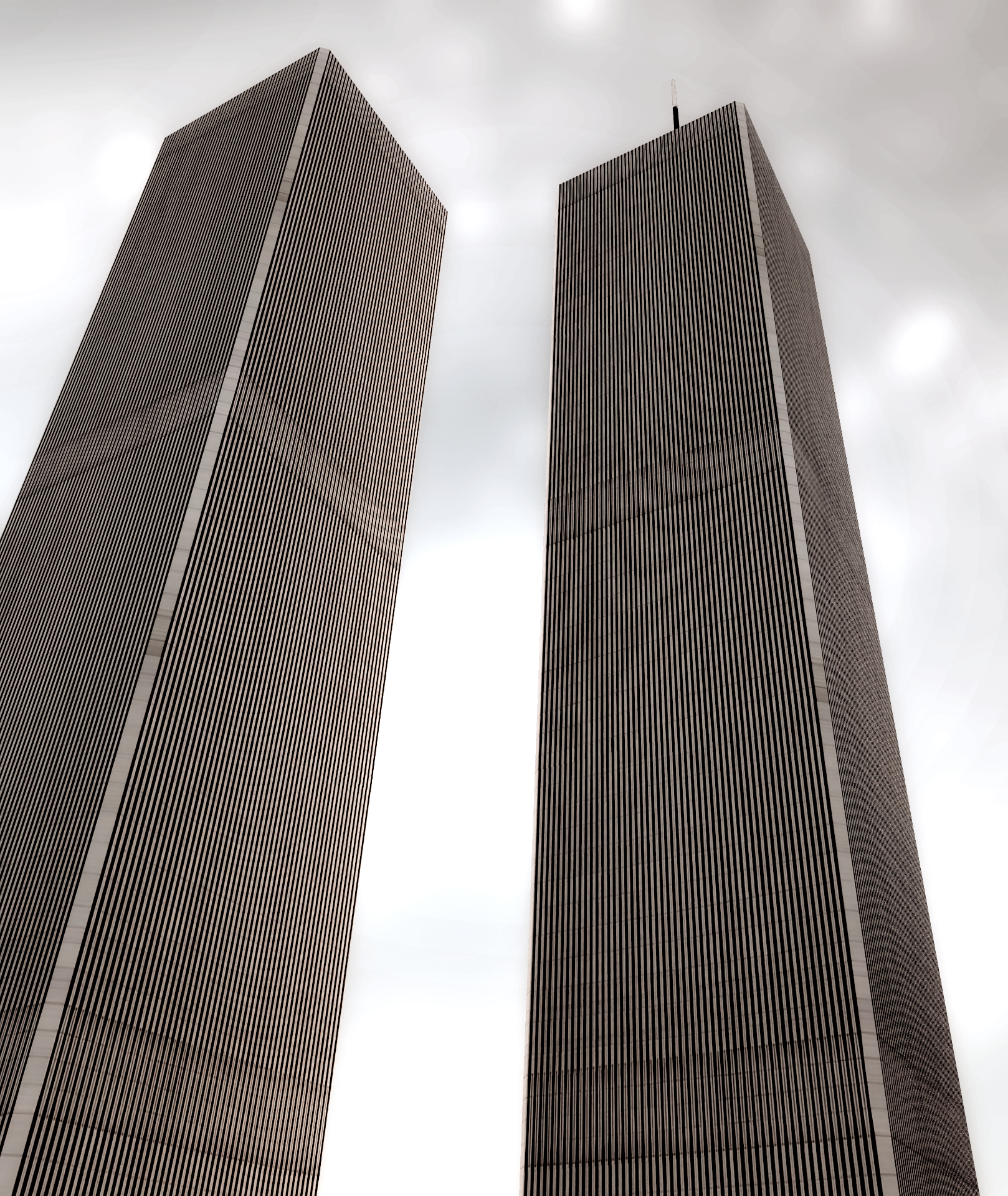
The Atlantic Trade Center in 1980.
On 1962, on September 10th, what was then the Port Authority of New York and New Jersey - now simply called the Port Authority of Hudsonia - assigned Minoru Yamasaki to design a new financial center in Lower Manhattan which would host ten million square feet of office space. It would be named the Atlantic Trade Center.
Minoru came up with the 'twin towers' design, as one tower would simply be too tall, and anything smaller would not have enough area to fit the quota. This would mean two towers that were each 110 floors tall. A major issue was elevator space. Due to how taller towers need more elevators, this would mean all the elevators would take up too much space and reduce the office space significantly. In order to fix this, Minoru Yamasaki came up with the concept of skylobbies. A set of high-capacity express-elevators would bring the building's traffic to the two skylobbies each, one on floor 44 and another on floor 78. From those skylobbies, sets of lower capacity local elevators would bring traffic up through to the next segment. Therefore, there were three groups of local elevators, one for floors 0-43, one for floors 44-77, and one for floors 78-110.
The twin towers design was accepted, and in March of 1965, the Port Authority started acquiring property in Lower Manhattan, funded by the New York city government. The demolition began on March 21st, clearing various low-rise buildings for the financial hub. Construction on ATC1 - the North Tower - began in August of 1968, and ATC2 - the South Tower - started being constructed in January of next year. Their topping out ceremonies were held on December 23, 1970, and July 19, 1971 respectively. Finally, the ribbon-cutting ceremony took place on April 4th, 1973. In 1971 a new subway terminal was built across the street from the two towers, named the Altantic Trade Terminal.
90s Skyscraper Spree
Throughout 1989 and 1990 the American economy started to steadily weaken due to the American Federal Reserve enacting restrictive monetary policies, aiming to reduce inflation. At roughly the same time, Iraq invaded Kuwait, leading to the 1990 oil price shock. Some economists claim that the Tax Reform Act of 1986 may have played a role in the upcoming financial crisis. However, the majority of the American working class and general public opinion claim that a combination of price gouging, corporate cartel formation, greed, and unemployment were to blame for the crisis being as severe as it was. Regardless, all these factors contributed to the eventual 1992 Financial Pseudocrash.
A pseudocrash defines the sudden decline in welfare, financial sustainability, and general quality of life, but exclusively relevant to the least wealthy ~70-80% of the population. Characteristics of a pseudocrash are; a stagnant or decreasing average wage, declining quality of life, price gouging across nearly all aspects (rent, food, gasoline), corruption, homelessness, and unemployment. It is called a pseudocrash because despite the vast majority of the population living worse off, the few wealthiest individuals — who typically own a major company or are employed in government — seem to accumulate even greater wealth. Furthermore, the national GDP may stagnate or even grow during a pseudocrash despite the rapid decline in quality of life, while the PPP will almost always decrease, which is accompanied by high inflation.
One of the most notable details of the 1992 Financial Pseudocrash is that most companies that sold basic necessities (food and drinking water) formed cartels and agreed to raise the prices during the pseudocrash, and not lower the prices after the crisis ended. Similar operations caused the subsequent rise in the price of gasoline, housing, public transit, cars, furniture, internet, insurance premiums, and various other products and services. The scale of price-gouging was contributant to a major increase in the number of billionaires in the Unitary American State in the 1990s, going from 66 billionaires in 1990 to 298 billionaires in 2000; a 352% increase.
The pseudocrisis mostly affected the mainland Unitary American State, with the exceptions of Klondike and Alaska. The worst of the crisis happened in the Northeast, hitting the populations of New York City, Boston, Baltimore, Philadelphia, and Washington, District Columbia the hardest. Price gouging in those cities were also known to be the most ludicrous, with products like bread costing 453% more, milk 386% more, and eggs 297% more in New York City specifically. Due to the increase in gas prices — again due to price gouging — driving towards rural areas where price gouging was less extreme was not beneficial either. There was no defined "end" to the 1992 Financial Pseudocrash, as its most major effects never subsided and instead simply stopped getting worse. February 1993 is generally considered the "end" of the crisis.

860 Broadway Metro Tower as seen in 1995.
In September 1993, the American Congress began discussing a bill to reduce prices on basic necessities amid increasingly insurmountable protests, riots, and theft. The rich were concerned the bill would significantly reduce the rate at which they were accumulating wealth. This moment defines the beginning of the 90s Skyscraper Spree.
Four billionaires decided to cooperate with the Metropolitan Life Insurance Company to expand the Metropolitan Life North Building into a luxury commercial office and hotel skyscraper, seeking to consolidate wealth in high-value properties. The initial 1920s design of the Metropolitan Life North Building called for a 100-story building, but it was cut short at 30 stories due to the Great Depression. The current, new plan called to continue the construction of the remaining 70 floors with expansive offices and even a hotel at the top floors. Metlife initially planned to renovate the building and keep the 30-story design, but was convinced to continue the tower to 100 floors. Construction began on November 17th, 1993, and the rooftop antennae were installed next year on the 22nd of January.
The project inspired various other billionaires as well, and began purchasing properties for the future construction of their own towers. Despite it being against the city's zoning laws, the city government was known to be corrupt, and eagerly redrafted zoning in Manhattan to accomodate the interests of the wealthy in exchange for ludicrous sums (ranging between 500k and 6mil ASD). Most of the properties were being bought in Union Square, the Flatiron District, West Village and Chelsea, though there were some purchases in Lower Manhattan, Midtown Manhattan, and even Brooklyn. These far-flung properties would eventually become 80 South Street, Grand Central Tower, and Twin Bridge View. These billionaire-funded skyscrapers are slandered to this day, with most of the lower and middle class of New York expressing hate towards them, calling them "a tumor on the skyline", "a cancer from the nineties", and "money-laundering vanity dumpsterfires". They are most commonly referred to as Plutoscrapers — a portmanteau of "plutocracy" and "skyscraper" — or Olitower/Oligtower, a portmanteau of "oligarch" and "tower".
The first "plutoscraper" to start construction was 860 Broadway Metro Tower by Union Square Park. Built on the former site of a mixed-use commercial-residential minor hub, 860 Broadway Metro Tower replaced it with luxury offices and headquarters for various media corporations. The billionaire financiers of the tower demanded that the design be eye-catching and centered around vanity. Therefore, architects incorporated highly reflective windows and a geometry that would make the building cast shadows on itself, resulting in its appearance looking "trippy". Demolition of the extant buildings began in December 1993, and the building was topped out on March 15th 1994.
Another significant "plutoscraper" that was built was Third Avenue Tower, largely functioning as a mall, indoor recreational park, vanity project, and tourist trap. Much like 860 Broadway Metro Tower, the design boasted highly reflective windows and an angular design, but without setbacks. It also featured three observational decks which all charged an exorbant entry fee of $10 as of 2001. Third Avenue Tower was built on the former site of various lowrise apartment buildings. Construction began on June 9th 1994, and finished construction on November 30th 1994.
Between 1993 and 1997, 30 "plutoscrapers" were built, and 5 more between 1998 and 2004. The remarkably quick construction of these buildings was largely due to construction companies being paid enormous sums to priorise the construction of "plutoscrapers" over other contracts, leading to a significant shortage of housing in the years to come, with affordable housing almost ceasing to be built entirely after 1996, with affordable housing only restarting construction during Lucas Mayweather's Administration in 2001-2005.
The Construction of Superior Union Tower
In 1995, the 90s Skyscraper Spree had drawn the attention of various deep state organisations and highly regarded persons affiliated with the deep state. Up until then, all deep state sites and locations were located in extremely isolated areas, such as the Kondyor Arena and Old Bermuda. A location in the heart of Manhattan was considered enticing and lavish. In October of that same year, the ASC, UDSN, CIA, IAS, SIS, BND, MSS, and UCA, along with several other organisations collaborated to finance the construction of Superior Union Tower, amassing roughly 11 billion ASD in funding. █████████ was commissioned to oversee the site and design of the tower. They chose an entire block for Superior Union Tower, namely the block between Broadway, University Place, East 13th Street, and East 14th Street, right by Union Square Park. █████████ designed a small plaza on the north side of the block, but most of the block was dedicated to the tower itself. Some of the organisations funding the tower wanted the design to incorporate their respective views and policies. The UCA wanted an unremarkable dull office building that wasn't too tall, the ASC wanted the majority of the building to extend underground rather than a skyscraper — a hallmark of ASC facilities — yet the SIS and MSS wanted something towering and magnificent akin to the Metropolitan Life North Tower. The BND wanted a tri-tower design with two smaller buildings and one larger tower. The UDSN just wanted to get it done. Eventually, the proposal of the SIS and MSS was accepted, and █████████ began drafting a design for the tower. █████████ took inspiration from the Metropolitan Life North Tower, implementing three sets of setbacks that slightly narrow the skyscraper the taller it went. It also featured two antennae, and an "inverted moon" roof, and a unique design incorporating one-way mirrors for window panes. By January 1996, a final design was accepted by all contributing organisations, and work could begin.
Demolition of the block began in February, and all buildings on it were completely demolished by early April. The foundation was completed in June, and the plaza was completed in July. The tower itself started construction in August, and the topping out ceremony was held on May 31st 1997. Construction took far longer compared to other "plutoscrapers" primarily due to the fact that the exposed floors of the building had to be shrouded in scaffolding and other obstructions during construction. It was secondarily due to UCA raising concerns about helicopter access about halfway into the towers' completion. Since the building's steel frame was not designed to support a helicopter, the roof was not designed to accomodate a helicopter, and half of the tower was already built, helicopter access was in no way feasible at this point in the construction. However, UCA repeatedly expressed their desire for helicopter access to Superior Union Tower. Throughout December 1996 and January of next year, UCA even repeatedly asked the UDSN for helicopter access on the Pan Am Building. Since the UDSN owned the rooftop of the Pan Am Building, it was their choice to allow or deny UCA helicopter access. They declined as there was only one helipad and they, quote; "...really, kinda, sorta need that". The BND suggested there be an aircraft stand at LaGuardia Airport, connected to Union Square Station via a secret high-speed underground rail tunnel. UCA accepted this deal, and the boring of the tunnel began in June 1997, and the tunnel was completed in February 1998, opening that same month. It would eventually prove to have been a better alternative to rooftop helicopter access, as many deep state organisations other than UCA ended up using the rail tunnel to get to Superior Union Tower.
Superior Union Tower has been the site of various deep state galas, parties, and meetings to this day, and is said to have improved international cooperation between deep states. An annual New Year's Gala is hosted at the top floor of the tower; an expansive ballroom with exorbant views of New York City, where the finest champagnes are served.
In 1993, the Atlantic Trade Center was bombed at the ATC3 Vista Hotel by unknown perpetrators, coloquially known as the 1993 Atlantic Trade Center Bombing. The interior of the hotel was damaged to the extent where the Vista Hotel Company was no longer interested in repairing the hotel and sold it off to the Host Marriot Corporation, who covered the costs of the repairs.
21st century
November 6th 2001 marks the date of the 2001 Hudson Metropolitan Area gubernational elections. The three main candidates were Michael Gloomberg of the Republican Party, Mark Green of the Democratic Party, and Lucas Mayweather of the Appalachian Party. Lucas Mayweather won the elections with 41% of the popular vote, with Micheal Gloomberg and Mark Green recieving 32% and 27% of the popular vote respectively. Mayweather was already popular as he was elected for mayor of New York City in 1997, and had significantly cracked down on corruption during his term. Due to this, "plutoscraper" construction grinded to a halt under Mayweather's council, which only increased his popularity among NYC residents. He had also survived an assassination attempt, and had capped the cost-per-mile of certain MTA public transit lines.
Mayweather announced in speeches that he did not plan on drastically changing "...much of anything", and instead promised a stable era for the Hudson Metropolitan Area while also cracking down on corruption further. He would follow his promise in the following months. In contradiction to this, he later introduced an unprecented yet not unwelcome policy, which was to; "...restart the expansion of Hudsonia's public transit network". In a speech, he claimed that "...Hudsonia's public transit infrastructure is outdated and inefficient. We haven't laid an inch of rail since the 1940s. The 1940s! And we sure didn't have eight million people in the 1940s, now did we? Change is in order. New lines, new trains, and new stations."
Throughout 2002, Lucas Mayweather revitalised public transit. He broadened price caps on the busiest MTA lines, as well as the busiest LIRR lines, and all PATH lines. In 2004, the Hudson Metropolitan Area collaborated with the MTA and LIRR to introduce a state-universal transit card called the "HudsonCard", which could be used on all MTA, LIRR, and PATH services regardless of operator. Stations state-wide were also modified to create a unified "fare zone" between operators' platforms, meaning commuters no longer needed to scan their card when merely changing operators. The changes were carried out during the night and off-hours, meaning fares could not be collected. Commuters were allowed to travel for free during the modifications, and the MTA, LIRR, and PATH were partially compensated for the loss in fare income by the HMA administration.
From 2003 to 2005, the HMA administration oversaw PATH's expansion westward, into Newark. The initiative was partially funded by PATH itself, but the bulk of the funding came from a five billion dollar grant to PATH from the Hudson Metropolitan Area administration to expand their services beyond the Hudson river. The new PATH lines include; Grand Central Station to Atlantic Trade Center via Union Square, Grand Central Station to Newark Central via Jersey City, Atlantic Trade Center to Newark Central via Jersey City, Newark Central to Plainfield via Elizabeth, and two more lines from Newark Central to South Orange and Montclair. They are expected to open sometime in early 2005.
Lucas Mayweather reportedly wanted Amtrak in on the Hudsoncard Program as well, but they declined as Amtrak services crossed state lines, and Hudsoncard is a program exclusive to the state of the Hudson Metropolitan Area. A compromise was made instead, with Amtrak allowing Hudsoncard only on Amtrak services that remained within the state borders of the Hudson Metropolitan Area. The first Amtrak line that accepted Metrocard opened in January 2003, which was a semifrequent regional service between Grand Central Station and Riverhead, with intermittent stops at Jamaica, Hicksville, Medford, and several other stations. Another Amtrak line opened two months later in March, going from Grand Central Station to Peekskill via Yonkers. Amtrak wanted to extend the line to the larger town of Newburgh, but as that line would cross state lines into the State of Albany, it was cut short at Peekskill. Another line that was cut short due to crossing state lines was a line opened in August 2003, which was supposed to run from Grand Central Station to Easton, Pennsylvania, but was cut a mere one and a half miles short at Phillpsburg, HMA. SEPTA — a transit authority that usually exclusively concerns itself with Philadelphia — was approached by Amtrak to collaborate and requested them to run bus lines through Easton and across state lines to Phillipsburg Amtrak Station, which they agreed to do.
Lucas Mayweather had won over HMA residents by this point, not only due to extensive expansions to the public transit network in both rail and bus lines, but also due to his crackdown on corruption, and his underhanded support of the LGB community.
Gallery
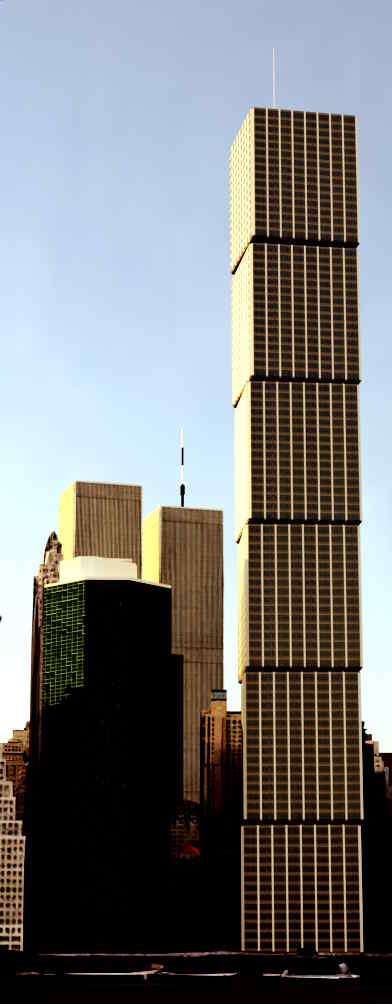 |
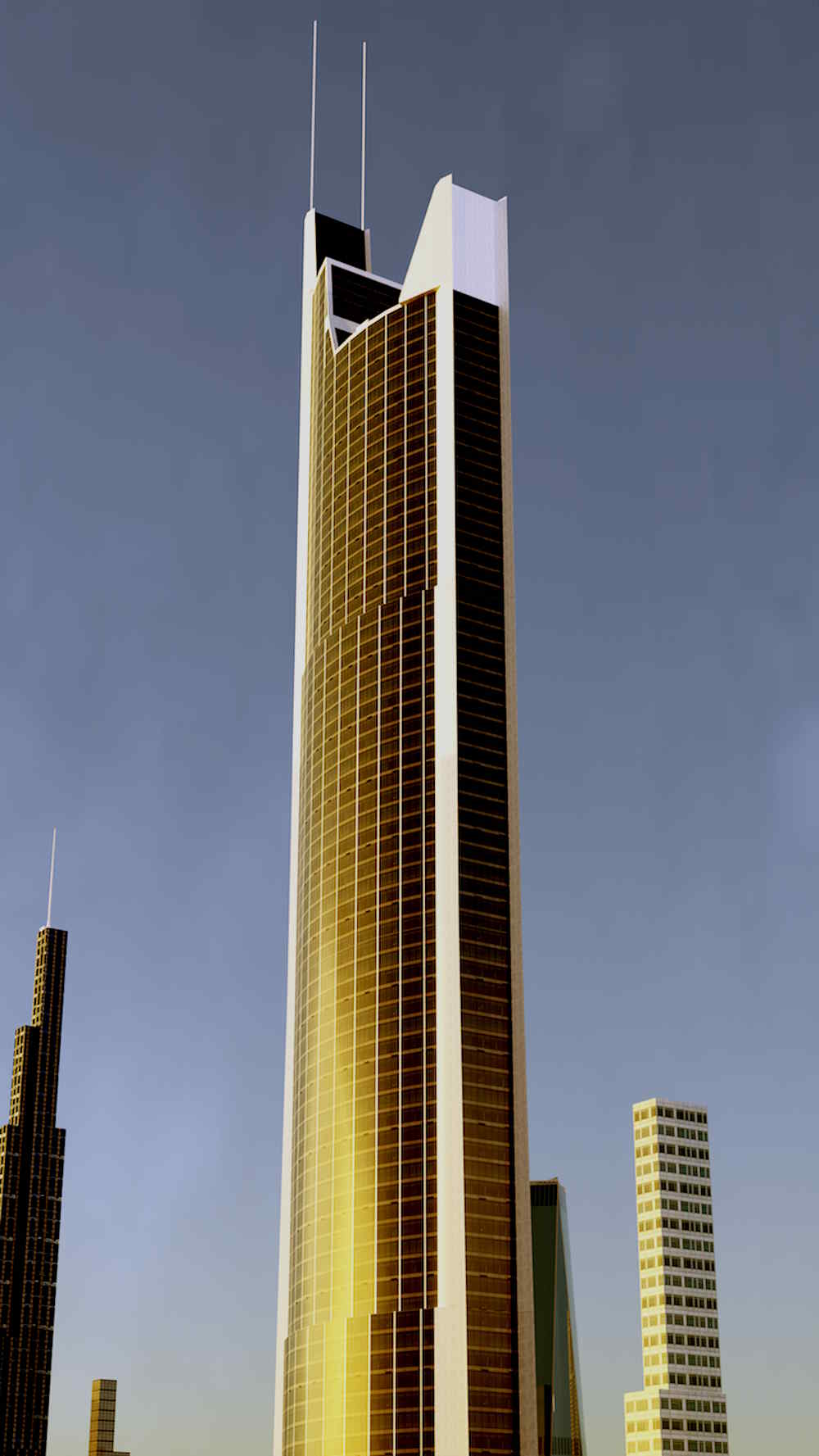 |
 |
80 South Street photographed from The Granite Prospect. The Continental Center is to the left of 80 South Street, with the Atlantic Trade Center in the background. |
Superior Union Tower photographed from the second observation deck of Third Avenue Tower, photographed the morning after the New Years of 2005. Notice the lack of decoration on the building, as it was one of the few skyscrapers in New York to not decorate its facade for the event. Left to right, the following buildings are visible in the background; 25 West 14th Tower, 55 West 15th Tower, 620 6th Avenue, and the Unification Building. |
The Atlantic Trade Center as seen in January 2003, taken from 11th Avenue. To its left, 7 Atlantic Trade Center is visible. The shadow of the 2 Atlantic Financial Center is seen cast upon the lower floors of the 1 Atlantic Trade Center Tower. |
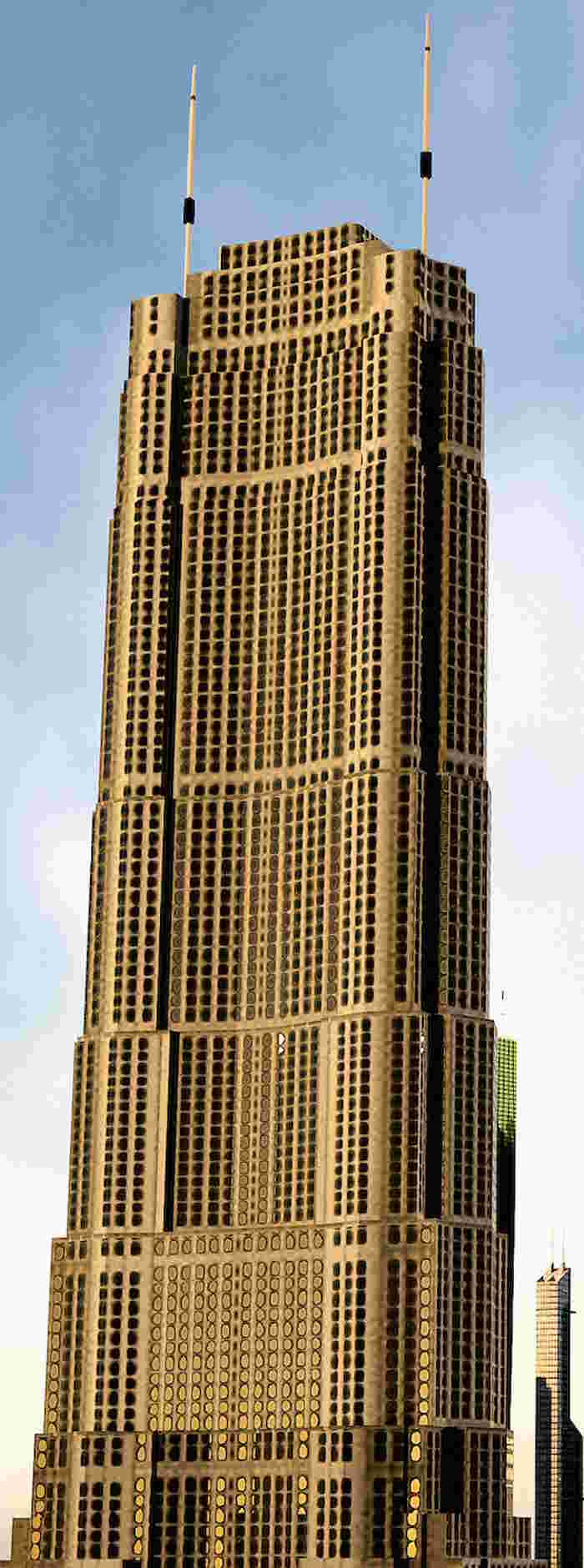 |
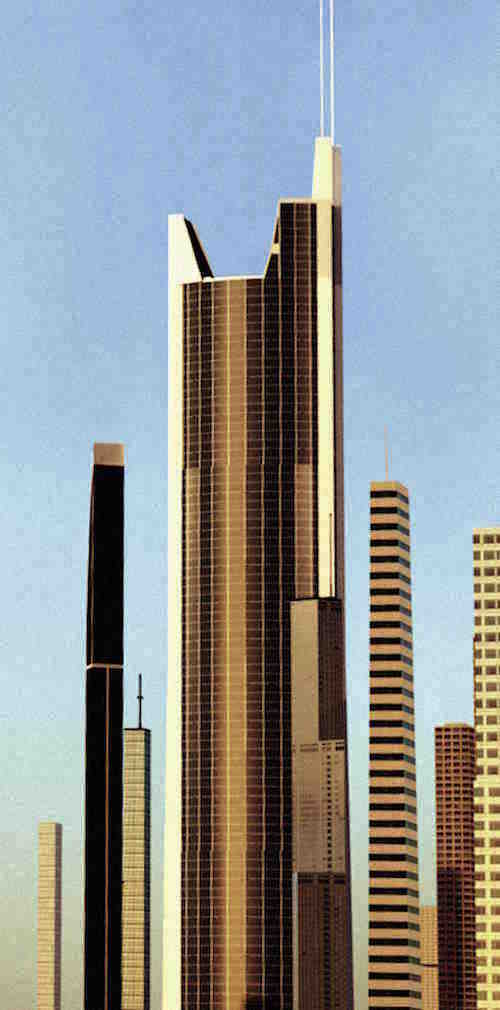 |
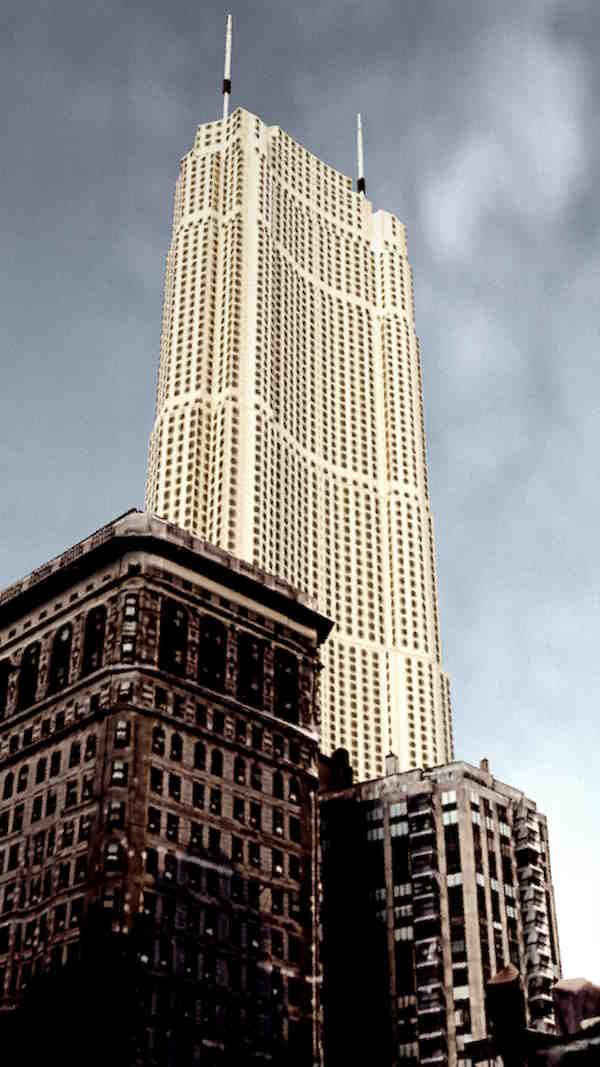 |
The Metropolitan Life North Tower by Madison Square Park, photographed from the Empire State Building in 1999. Two buildings are in the background on the right, those being 41 Madison Tower and 3rd Avenue Tower. |
A photo titled "The Crowded Superior Union Tower" taken in October 2004. The Superior Union Tower towers among the other skyscrapers, those being (left to right); 434 Lafayette Street, 799 Broadway Tower, 363 Lafayette Lofts Tower, 860 Broadway Metro Tower, 888 Broadway Tower, the Washington Square Twins, and the Unification Building. In the bottom left, 80 South Street is hiding between 888 Broadway Tower and the Washington Square Twins. |
The Metropolitan Life North Tower as seen in 2002. The photo was taken at the intersection between 5th Avenue and West 22nd Street. The back of the Flatiron Building is visible in the bottom left. The Madison Green Apartment Building is in the bottom right. |
 |
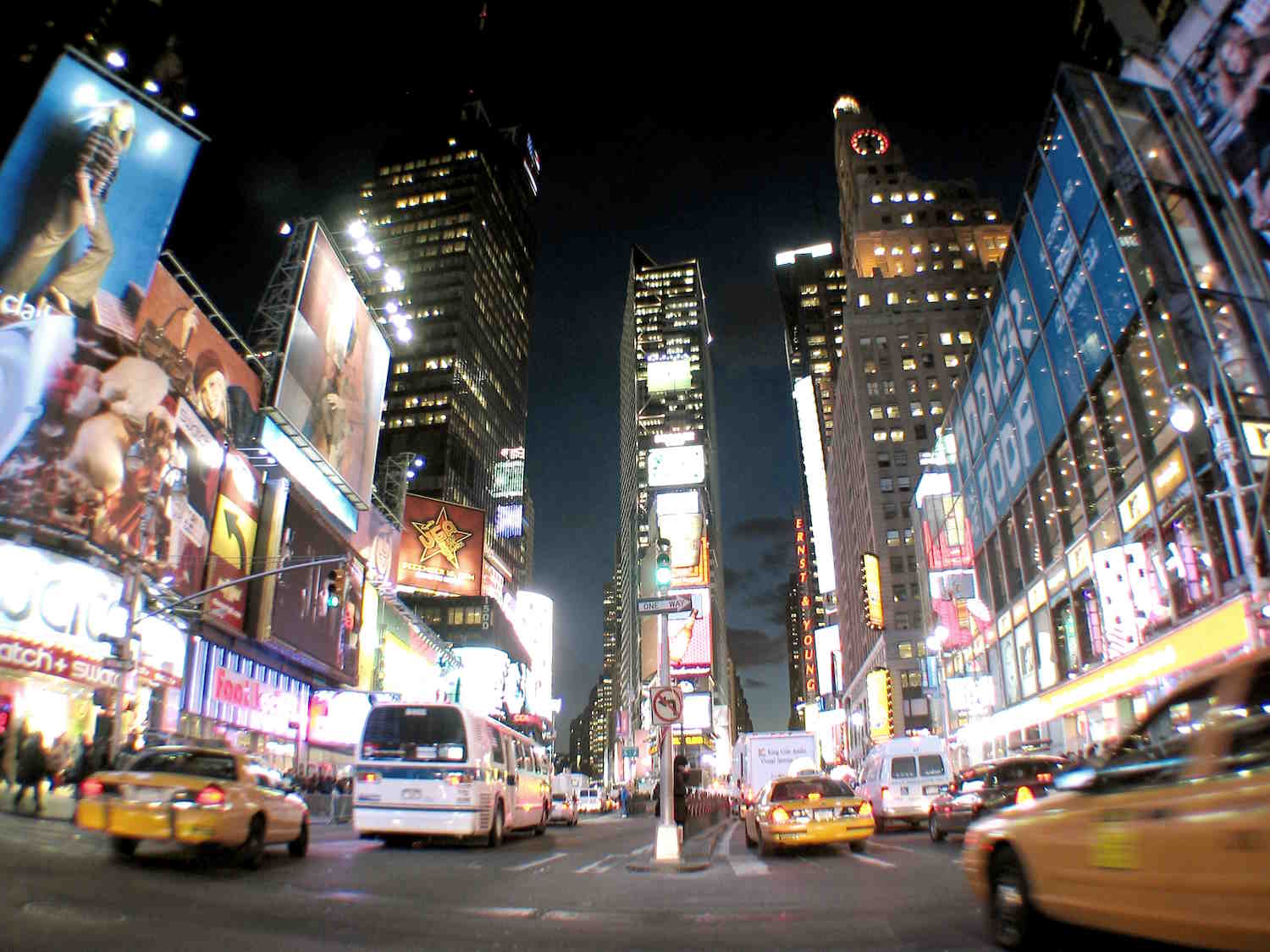 |
The Empire State Building in 1932. |
Times Square in 2005, photo taken by Daniel Schwen. |
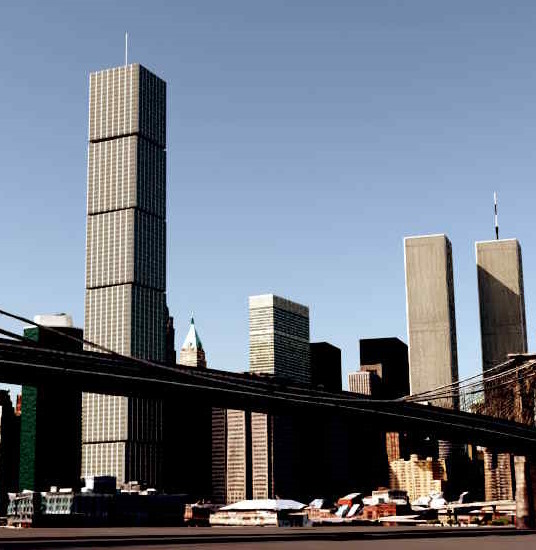 |
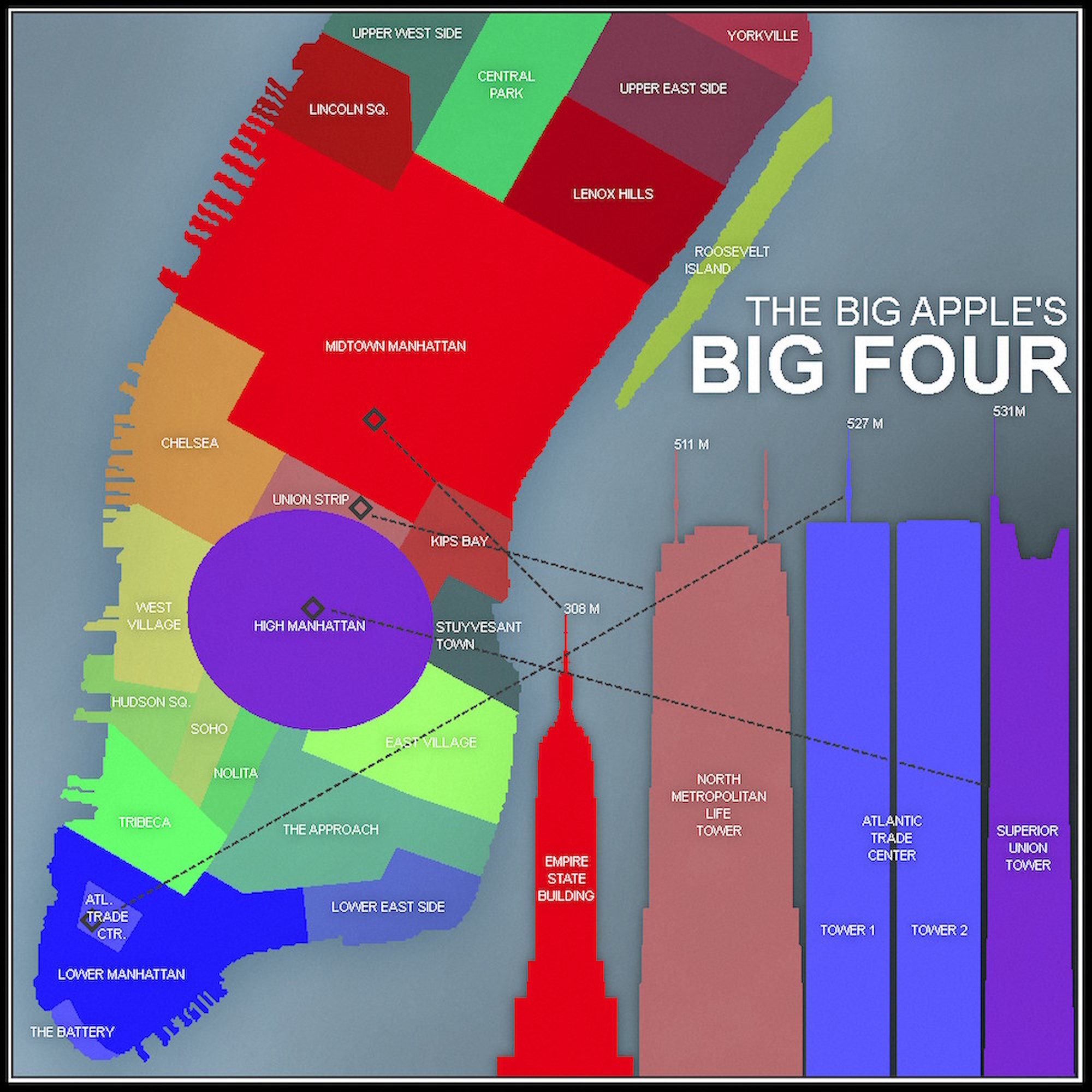 |
A photo of Lower Manhattan taken from Pebble Beach. The exact date of this photo is unknown, but as 80 South Street is seen fully completed, it must be after December 2004. |
An infographic showing the four most famous buildings in Manhattan, along with their respective locations, heights, and names. It also shows the different regions of the lower half of Manhattan. The date of print and publisher are unknown. |

Lower Manhattan in 2005.

